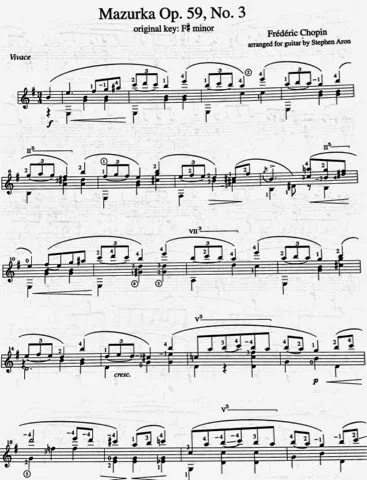Guitar Music on Other Instruments.
My Oberlin colleague, Webb Wiggins, harpsichord professor, gave a gorgeous recital this week featuring music by Froberger, C. P. E. Bach and J. S. Bach. To my surprise and delight, he had chosen to program the Prelude, Fugue and Allegro, BWV 998.
The experience of hearing familiar repertoire pieces played on other instruments can be strangely revelatory. We become accustomed to the musical character that emerges when a score is rendered through the familiar lens of left hand barres and shifts and right hand string crosses and articulations. It becomes an artical of faith that a certain sound is what is intended, and that that sound is what is possible. It is easy to become inured to other possibilities. You might say it's a form of mental laziness when we stop imagining the music in other, new ways. But if so, it's a strange kind of universal laziness, as this myopia is so common, one might call it normal.
So it is especially delicious to hear the familiar works played on another instrument. Harpsichordists have long considered the lute repertoire as fair game, and there are plenty of extant examples of them bringing their informed imagination to other works familiar to guitarists, including the Suites BWV 997 and 996.
As might be expected, Mr. Wiggins played the piece with an approach seldom heard on the guitar, yet strangely familiar in all it's components. His Prelude was gorgeously expressive, with an unabashed rhythmical give and take and plenty of recovery time at the conclusion of each phrase. His Fugue featured a brighter tempo than that taken by most guitarists, and was less fussy. He took the architectural view, presenting Bach's long sequences in a single gulp and so rendering the form of the movement readily discernable, a refreshing change. Finally, his Allegro was predictably brisk, and showed none of the customary strain audible in performances on the guitar. All of the complexities of execution - the lightning fast shifts, the challenging dampening of overringing open strings, the discrete articulation of the two voices - all of those vanished into a whirlwind of sixteenth notes, effortlessly played and stylistically articulated. It was delightful.
He preceded his performance with a nod to the work's provenance, allowing that, in spite of it's designation at a lute work, it's original intent was debatable and that a lutanist friend had told him it was unlikely a true lute piece, owing to it's extreme difficulty. And we've all read about the "lautencembalo"--the specially strung keyboard instrument Bach used to write his "lute works." But the musicological discussion in this case is entirely beside the point.
The thing that interests me is the genuine newness an interpretation on a different instrument inevitably brings to the table. I have often heard marimba players play music from the guitar repertoire. Again, the effect is tantalizing: why can't we do that? (Maybe we can...) In the hands of a percussionist, the repertoire gained extraordinary dynamic range I've never before imagined. It was fantastic. Can we learn from this?
Once I was asked by a faculty piano teacher colleague to come into her class to give a special coaching. I was surprised but happy to oblige. It turned out she was having her students play Tarrega's Capricho Arabe on piano. What a revelation it was to hear these pianists' performances! Completely free of influence by the sometimes odd, idiosyncratic interpretations associated with Segovia, they played the piece beautifully, as written. To them, it was pretty simple: none of the struggle guitarists experience with barres or fast scales was evident and the rhythmic flow of the tune was perfectly clear. I never played it the old way again.
An orchestra I heard once programmed Frank Martin's own orchestration of his Quatre Pièces Brève. It was amazing to hear which elements of the piece he'd chosen to expand or amplify through the use of particular instruments. The piece took on entirely new dimensions, absolutely galvanizing my imagination. Every time I've played it since then, my interpretations have been under the spell of that performance.
An excersise I like to give my students is to (in their imaginations) orchestrate their music. They are to designate instruments for various parts and consider changes of orchestration at new sections of the piece. They write it into the score: va (viola), ob (oboe), etc. then, of course, they have to play with intent to communicate the orchestration to listeners. It is remarkable how imaginative their playing suddenly becomes.
This notion of imitating other instruments is immensely useful. Once you've heard how the Prelude, Fugue and Allegro sounds on harpsichord, the model is there for you to draw on in your quest for your own way to play it. Sometimes it's simply a matter of listening to an original. How many students of the music of Albeniz on the guitar play the pieces without having listened to the piano originals? The same question needs to be asked in reference to the Bach Cello Suites.
Our imaginations are set on fire when confronted with this experience. Like a paradigm shift, the familiar is suddenly new and the new is strangely familiar. Seek out such experiences and use your imagination to invent them on your own: what would this passage sound like if played by string quartet, by an organist, by a male choir? How would a clarinetist treat this melody, or a tenor, or a violinist?
You may be surprised at how much more colorful, more stylistic, more musical your pieces will sound.





